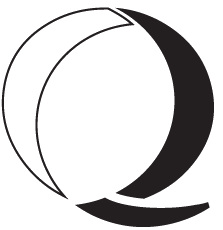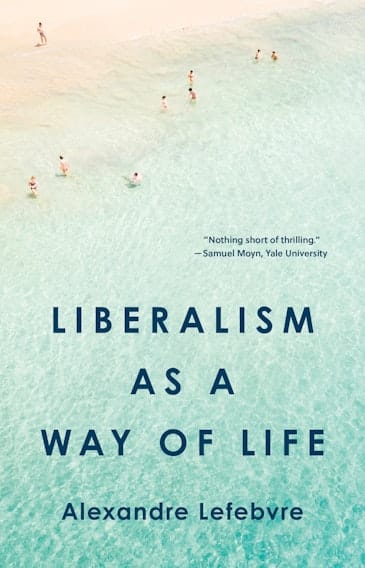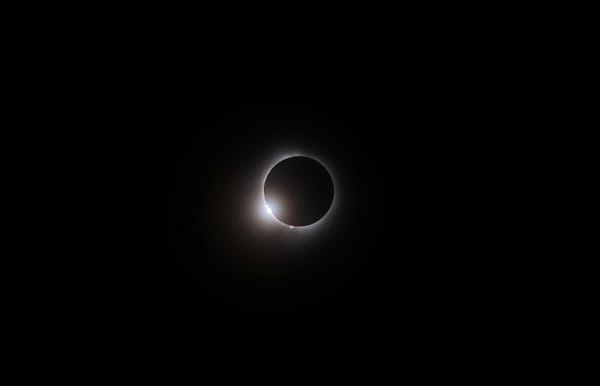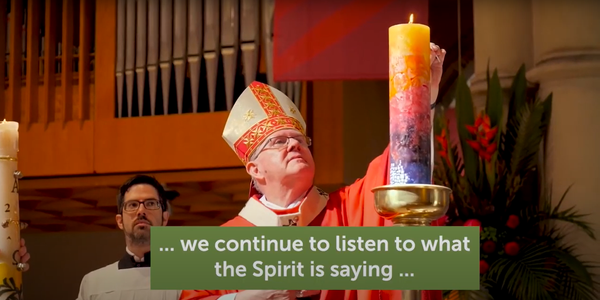Fruitcakes at the end of Christendom // Charles Williams' Hot Cross Buns
Perhaps the decline and fall of Christendom is as much a part of divine providence as its miraculous rise

The church, wrote the Orthodox theologian Alexander Schmemann, "by her very nature belongs to the end: to the ultimate reality of the “world to come,” the Kingdom of God."[1] In this respect, the church is as much a paradox as the incarnate Christ: a visible and earthly reality that somehow communicates and makes present something invisible and divine. As a result, the church’s relationship to the world is always in tension: like Christ, the church is "not of this world" and fundamentally at odds with it, but at the same time it exists "in the world", for the world's sake, to transform and redeem it.[2]
This tension isn’t just an abstract theological idea: the church is constantly faced with the very practical question of precisely how it can be present in the world while still maintaining its eschatological otherness. Over the last two millennia, different circumstances have driven Christians to vastly different conceptions of what the church in the world should look like. For the first three centuries, when Christians were a despised and persecuted minority dwarfed by the colossal and immemorially ancient social and political structures of Greco-Roman paganism, the church’s presence in the world was likened to that of leaven in dough: invisible, subtle, discernible only by its effect on the world around it. Thus, the second-century author of the Letter to Diognetus saw the Church's presence in the world as analogous to the soul’s presence in the body: a vital force invisibly dispersed throughout the "body" of the world, devoted to tending the world's wounds and preserving its life, but always maintaining a radical "otherness" from the world it was striving to save.
"The soul dwells in the body, yet is not of the body; and Christians dwell in the world, yet are not of the world. The invisible soul is guarded by the visible body, and Christians are known indeed to be in the world, but their godliness remains invisible."[3]
But then, in the fourth century, the impossible happened: against all expectation, and after one last bout of apocalyptic persecution, the Emperor Constantine became a Christian, and suddenly the empire which had exerted so much effort to eradicate Christianity began to heap favour and privilege upon the beleaguered church. Only a few generations later, the church had displaced the ancient paganisms that had formerly opposed it, and become the visible, tangible centre of imperial society: elaborate basilicas housed its liturgies, emperors bowed to it, armies defended it, society was centred around it.
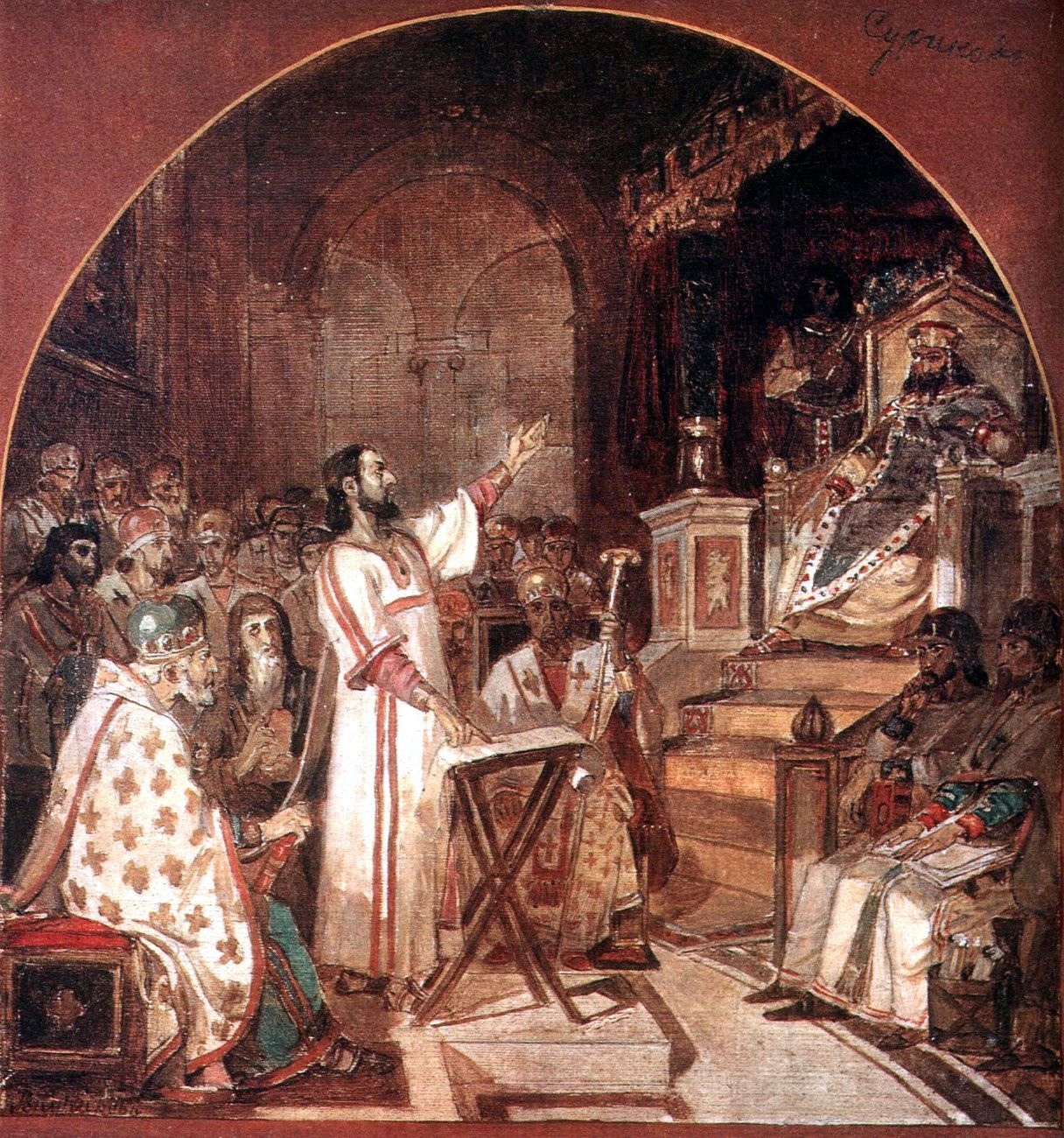 The Council of Nicaea by Vasily Surikov (1876) Photo: WikiArt
The Council of Nicaea by Vasily Surikov (1876) Photo: WikiArt
This transformation of the early church from obscure Jewish sect to international, imperial religion remains one of the great surprises of human history. It is not easily explained as a natural outworking of social and cultural developments that preceded it. The strangeness here is reflected in the mystery of Constantine’s conversion: in the memorable words of one historian, "all attempts to explain away Constantine as the natural outcome of the previous history of Rome have failed completely … The more closely Constantine’s life and achievement are studied, the more inevitably is one driven to see in them an erratic block which has diverted the stream of human history."[4] For those who lived through it, the triumph of Christianity over the old gods and its rapid spread were nothing short of miraculous: clear and indisputable evidence of divine agency interrupting human history. Thus, to Athanasius, the fourth century bishop of Alexandria, the conversion of the empire to Christianity was indisputable proof that Jesus Christ was alive and active:
Is it like a dead man to prick the minds of human beings so that they deny their father’s laws and revere the teaching of Christ? ... How, if he is not risen but dead, does he stop and drive out and cast down those false gods said by unbelievers to be alive and the demons they worship? [5]
Such was the startling beginning of what today, looking back, we call "Christendom": a civilisation that flourished at various times in places as distant and diverse as Egypt and England, Syria and Scandinavia, Italy and Ethiopia. In all these cultures of Christendom, the Church was not the subtle, animating force described in the Letter to Diognetus, but a ubiquitous, inescapable presence that shaped the collective imagination of everyone in society: everything in life—birth, death, marriage, time, law, entertainment, art, work, play, food—was somehow or other connected, referred to or understood against the background of Christ and the church. All births were marked by baptism into Christ’s death and resurrection; all marriages were solemnised before the Christian altars, as icons of Christ’s love for the church; the passage of time itself was measured by a calendar of saints and commemorations of the events of Christ’s life. The church and the polis became so closely intertwined that it was hard to tell where one ended and the other began.
But here in 2023, things look rather different. The age of Christendom seems to be very much over (admittedly with some apparent, but complicated exceptions) and its decline has been, in some ways, as surprising and unexpected as its beginning. In the end, it was not invasion or violent revolution that displaced Christianity. Instead, Western Christendom was transmuted from within, into secular modernity. The secular age in which we now live as modern citizens of the West (whether in Europe, America, or Australia) is one in which many of the external trappings of Latin Christendom still remain—we still celebrate Easter and Christmas for instance, and most people are still named after Christian saints—but where the meaning and inner content of those trappings has nearly entirely disappeared from collective consciousness. Christians remain in these cultures, of course, but only as one faith among many, and against a cultural background that takes non-religion to be the ‘default’ position.
Intellectuals of all stripes have spilled much ink trying to discern exactly what happened here: how is it that while in 1500, "it was virtually impossible not to believe in God ... in our Western society [,] in 2000 many of us find this not only easy, but even inescapable?"[6] Was it the rise of modern science? An after-effect of the Reformation? An inevitable result of the moral contradictions and compromises of Christendom?[7]
Coming to terms with this new "post-Christian" historical condition is one of the most important tasks for Christians today, and not only the theologians among them. What does it mean to be a Christian in a "post-Christian", secular society? What lessons should we draw from the decline of Christendom? What should we make of the many relics and echoes of Christianity that still haunt post-Christian culture? How should we understand the great spectrum of new spiritual and religious moods that has flourished in modernity, both within and outside the Church? Questions like these (and the myriads of others raised by them) are what an online space like QUIROS exists to explore.
With this in mind, to celebrate the beginning of QUIROS, I wanted to reflect briefly on a poem by the eccentric Charles Williams (1886–1945). Williams was a member of the Inklings, the famous literary group that included J. R. R. Tolkien and C. S. Lewis. And although he was never a well-known poet (which, as Lucas Smith reminded us recently, says nothing about whether or not he is worth reading), his poem Hot Cross Buns paints a poignant picture of a modern secular society still haunted by memories (both fond and fearful) of Christendom. Most compellingly, in Williams’ quiet, understated way, it begins to imagine what it might mean to see the end of Christendom and the rise of secular modernity as still lying within the providential course of divine action in history.
The poem, published in 1917, describes three "modern" persons—a baker, a householder and a doubter—consuming hot cross buns at Eastertide. In an earlier age, during the height of Christendom, hot cross buns were icons of the resurrection; eating them was a way of celebrating the joy and hope of Easter. In modernity however, the custom of eating hot cross buns is simply a relic of a world that has passed away, much like the celebration of Easter itself. As modern persons, the cast of Williams’ poem do not believe in Easter, and bake, break and consume the buns with varying degrees and flavours of unbelief, each embodying some form of characteristically modern alienation from the Christian past.
The baker who makes the buns is something like a deist. His highest ideal is "cosmic brotherhood", and although he believes in some "far-off divine event" that brought the universe into being, he sees the cosmos as the self-subsistent, mechanistic system of causes that has been the hallmark of modern philosophy since Descartes:
His mind all modern thoughts received,
In evolution he believed,
Heredity, environment,
And one far-off divine event,
Which though far-off it seemed to shine,
Showed not particularly divine ...
Naturally, the baker does not believe in Christ or the resurrection, but living as he does in the aftermath of Christendom, he bakes hot cross buns for Easter as is customary:
He made his buns for great and small,
Setting the cross upon them all,
And filled his poke with pence therefrom
But he had forgotten Christendom
Which was his birth-land once.
Likewise the modern householder, who is fashionably agnostic, has taken a day off work (for Bank Holiday, not for Easter), is so absorbed in his morning paper that the crosses adorning his Good Friday buns occasion only a brief smile.
Most striking though, is the description of the "modern doubter"—an avowed atheist—who eats the buns in conscious mockery of the outdated superstition they represent, yet still feels, despite himself, some deep echo of Easter joy:
He with unpriestly fingers there
Broke them between a jest and prayer
And felt within the rending crumb
Rumours of Tartarus o’ercome,
Torn desolations, broken sins,
And the high world of origins,
Hints, prophecies, and ecstasy:
Half doubted of profanity,
Yet felt religion leap therefrom:
For he remembered Christendom
Which was his birthland once.
Williams’ three protagonists, each in their own way, capture something of the ways in which secular modernity remains inevitably and inescapably "haunted" by the memory of Christ. To take just one, concrete example, welfare institutions like hospitals and orphanages, along with the social values they embody, are the direct descendants of early Christian practices which had no precedent in the pre-Christian world.[8] In David Bentley Hart’s words:
Even the most ardent secularists among us generally cling to notions of human rights, economic and social justice, providence for the indigent, legal equality, or basic human dignity that pre-Christian Western culture would have found not so much foolish as unintelligible. It is simply the case that we distant children of the pagans would not be able to believe in any of these things — they would never have occurred to us — had our ancestors not once believed that God is love, that charity is the foundation of all virtues, that all of us are equal before the eyes of God, that to fail to feed to hungry or care for the suffering is to sin against Christ, and that Christ laid down his life for the least of his brethren. [9]
In this way, to be a "modern" person, is still in some way to be an heir to the Christian vision of reality; as Hart puts it, "modernity is what comes 'after Christendom'."[10] In this sense, although explicit faith in Christ has declined, Christendom has left the modern mind "inoculat[ed] with the image of Christ".[11]
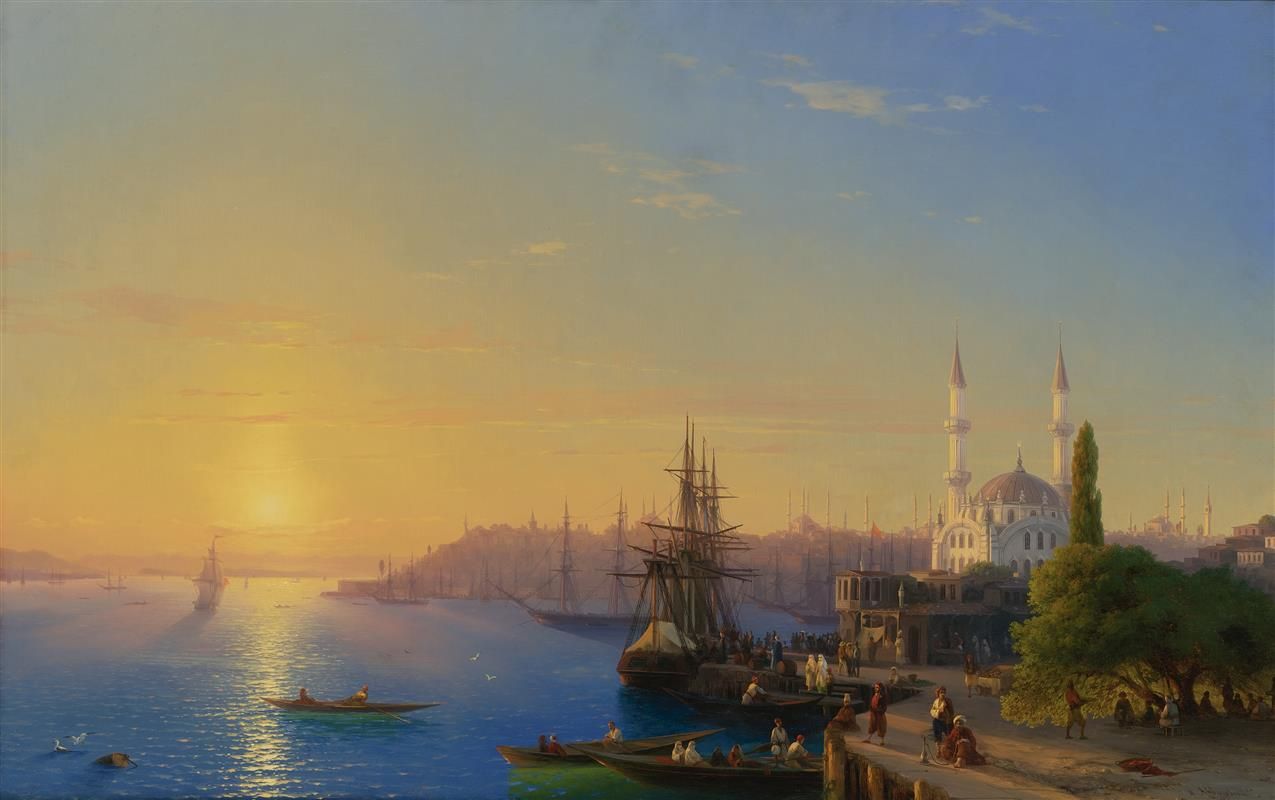 View of Constantinople and the Bosphorus, Ivan Aivazovsky (1856) Photo: WikiArt
View of Constantinople and the Bosphorus, Ivan Aivazovsky (1856) Photo: WikiArt
But Williams’ poem is not (and nor, I hasten to add is the present piece) a nostalgic lament for a golden age of Christendom. Without denying its positive effects, it is important to remember that (as St Augustine recognised long ago in The City of God) Christendom never was, and never could be, entirely Christian. If the Church really is the presence in this world of the eschatological kingdom of God, it cannot ever be entirely at home in any earthly polis: "for here we have no lasting city, but seek one to come" (Heb 13:14). "It is always good to be reminded," wrote Schmemann, "that 'this world,' even when it calls itself Christian, is in fact at odds with the Gospel of Christ, and that 'crisis' and the tension created by it are, after all, the only 'normal' mode of the Church’s relationship with the world, with any world."[12] The modern desert father Matthew the Poor was only echoing a long tradition of monastic critique of Christendom of when he insisted that any attempt to realise God’s kingdom with the violent tools of earthly statecraft would cut the Church off from her eschatological identity: "to the same extent to which the Church attained power from kings, it lost its spiritual power, which only appears in apparent, external weakness!"[13] Charles Taylor’s work is particularly effective at bringing out the deep contradictions and tensions that riddled Christendom from the beginning; in fact, he identifies the "corrupted Christianity" of Christendom as one of the chief causes of the rise of the secular age.[14] Echoing Matta’s monastic critique, Taylor concludes that identifying Christianity with civilisational order "not only makes us lose sight of the full transformation that Christians are called to, but it also makes us lose a crucial critical distance from ther order which we identify as Christendom..."[15]
In this light, perhaps the decline and fall of Christendom, and even the rise of the secular age, is as much a part of divine providence as Christendom’s first, miraculous rise. David Bentley Hart concludes as much in his important essay on the topic, where he contended that faithfulness to Christ in today’s world must include:
the painful acknowledgement that neither we nor our distant progeny will live to see a new Christian culture rise in the Western world, and to accept this with both charity and faith. We must, after all, grant that, in the mystery of God’s providence, all of this has followed from the work of the Holy Spirit in time.[16].
Whatever good Christendom realised by embedding the church in human civilisation, it also made it hard for the church to remember the tension, that defining sense of not being at home in this world, which in Schmemann’s view is "constitutive of the Chruch and of her life."[17] If this is so, the logic of Christianity itself always implied that Christendom, which tried in many imperfect ways to smooth over that tension, could only ever have been a temporary and imperfect thing, destined to pass away in the fullness of time.
This is the point captured in the last two verses of Hot Cross Buns. The penultimate verse reflects on the double-character of Christendom, its high ideals and tragic betrayals, all symbolised in the mundanity of the hot cross bun:
For God looked out on Christendom
Before he made the suns,
And down the ages saw it rise
With its huge wars and devilries [...]
He saw men stamp upon their food
The gallows guilty of his blood
And so draw double life therefrom,—
When the Lord looked out to Christendom
And saw Good Friday buns.
Inasmuch as Christendom was a fundamentally earthly order, belonging to the "form of this world" (1 Cor 7:31), it was only ever a partial truth destined to vanish in the eschaton. And so Williams’ final verse has God breaking up Christendom itself like a hot cross bun:
But when God breaks up Christendom
And Judgement Day is done,
He shall break it down those cross lines twain
Wherewith his son the world hath slain:
A most sure stamp, a most sure sign,
At the heart of the world (a Heart Divine)!
And Christ us save, for his Name’s sake,
On Judgement Day, when God shall break —
And the end of things shall leap therefrom!—
The worlds and the world and Christendom—
As I break this Hot Cross bun.
Alexander Schmemann, ‘The Underlying Question’ Church, World, Mission: Reflections on Orthodoxy in the West (St Vladimir’s Seminary Press, 1979) 10. ↩︎
Jn 17:14–18 ↩︎
Epistle to Diognetus 6; trans. Roberts-Donaldson, at Early Christian Writings ↩︎
N. H. Baynes, Constantine the Great and the Christian Church, 2nd edn. (Oxford University Press, 1972), 3. ↩︎
St Athanasius, On the Incarnation 30–31, trans. J. Behr (SVS Press, 2011). ↩︎
Charles Taylor, A Secular Age (Harvard University Press, 2007), 25. ↩︎
Two of the most important works on this are Talal Asad, Formations of the Secular (Stanford University Press, 2003) and Charles Taylor, A Secular Age (Harvard University Press, 2007). James K. A. Smith has written a helpful guide to Taylor’s notoriously inaccessible book called How (Not) to Be Secular: Reading Charles Taylor (Wm. B. Eerdmans, 2014). ↩︎
"... the present-day welfare state can be understood as the long term heir to the early Christian church." (Charles Taylor, A Secular Age, 737). ↩︎
Hart, Atheist Delusions: The Christian Revolution and Its Fashionable Enemies (Yale University Press, 2009), 32–33. ↩︎
Hart, Atheist Delusions, 32. ↩︎
Alexander Schmemann, The Historical Road of Eastern Orthodoxy, trans. Lydia W. Kesich (New York: Holt, Rinehart & Winston, 1963), 94. ↩︎
Alexander Schmemann, ‘The Underlying Question’ Church, World, Mission: Reflections on Orthodoxy in the West (St Vladimir’s Seminary Press, 1979) 10. ↩︎
Matta al-Miskin, Church and State: Sectarianism and Fanaticism (Scetis: Monastery of St Macarius, 2009), 22. ↩︎
See Taylor, A Secular Age, 735, 737–44. ↩︎
Taylor, A Secular Age, 743. ↩︎
Hart, ‘Christ and Nothing’ First Things, Oct 2003. ↩︎
Schmemann, ‘The Underlying Question’, 11. ↩︎
